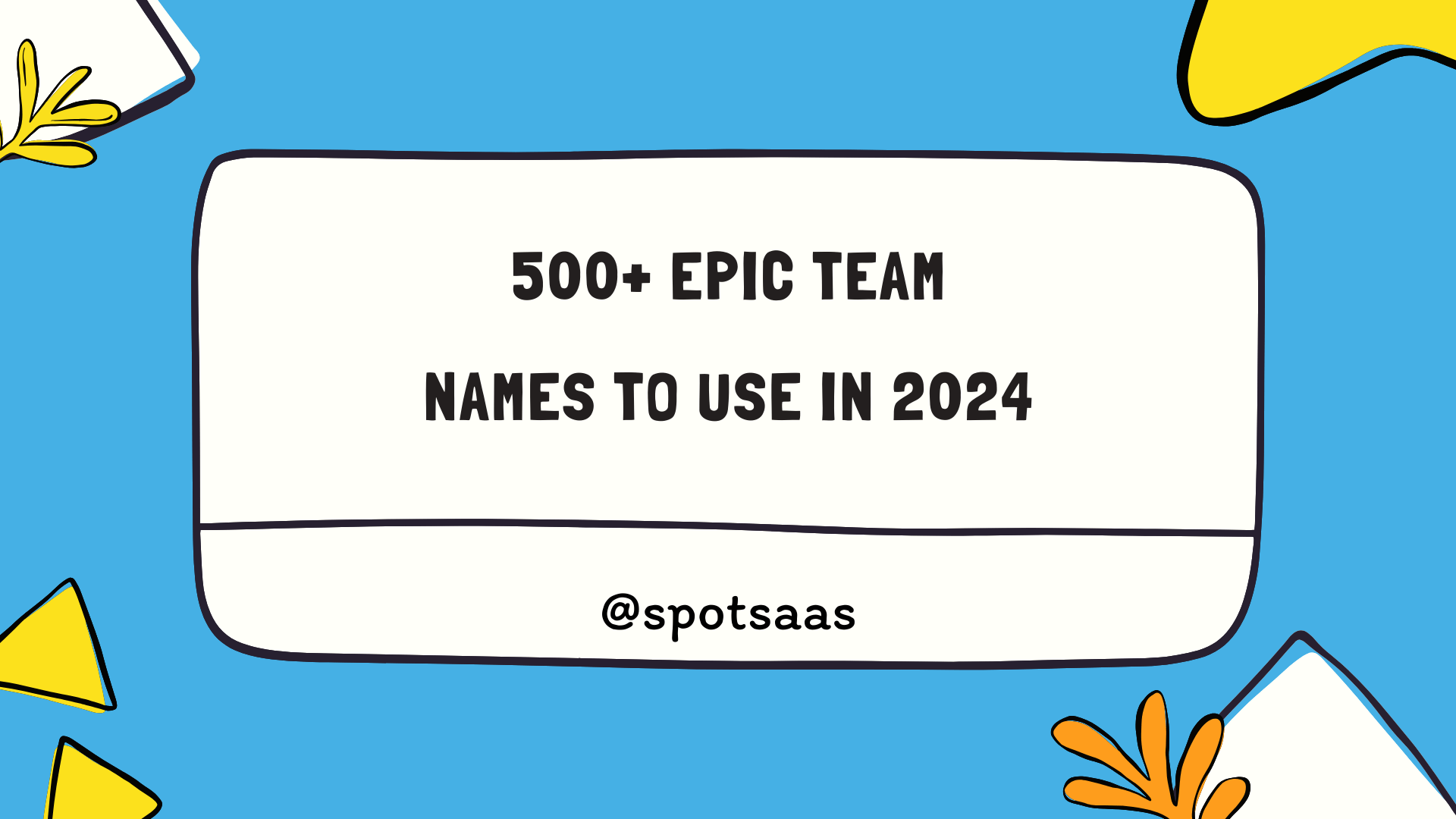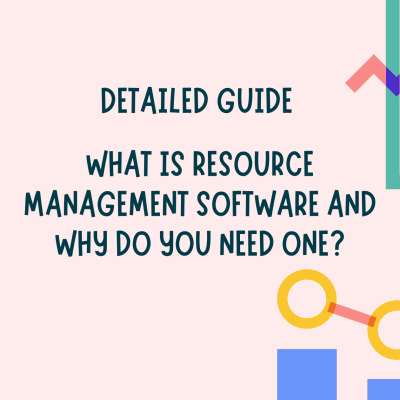How To Choose The Best Enterprise Asset Management Software
Choosing the right enterprise asset management (EAM) software can be a daunting task due to countless options and features. With reports showing that the ideal EAM system can deliver over 350% ROI, your choice must be spot-on.
This article will guide you through understanding EAM software capabilities, highlight key features to look for and provide a step-by-step process for making your selection.
Understanding Enterprise Asset Management Software
Enterprise Asset Management (EAM) software is a powerful tool that helps organizations effectively manage their assets throughout their lifecycle. EAM goes beyond traditional maintenance management systems by providing a holistic approach to asset management, encompassing everything from acquisition to disposal.
EAM software is designed to track and analyze an organization’s physical assets, such as equipment, machinery, vehicles, and facilities. It allows businesses to create a centralized database of all assets, enabling efficient planning, scheduling, and maintenance activities.
Unlike Computerized Maintenance Management Systems (CMMS), which focus mainly on the maintenance aspect of asset management, EAM software takes into account the entire lifecycle of an asset.
It includes features like procurement, inventory management, predictive maintenance tools, and financial tracking capabilities.
The importance of EAM cannot be overstated in today’s rapidly changing business landscape. Effective asset management can lead to increased operational efficiency, reduced downtime costs, improved regulatory compliance, enhanced decision-making based on accurate data analysis and forecasting.
Definition and purpose
Enterprise Asset Management Software or EAM is a special tool. It helps businesses take care of their assets in an easy way. These assets can be physical, like buildings and tools, or digital, like data files and software licenses.
With EAM software, firms can track the life cycle of their assets from start to end. This includes buying the asset, using it, upkeeping it, and finally getting rid of it when not needed anymore.
By doing this, companies save time and money as they use their resources in a better way. The main job of EAM software is to make sure all these tasks run smoothly without any issues.
Differences between EAM and CMMS
Enterprise Asset Management (EAM) and Computerized Maintenance Management Systems (CMMS) are two distinct types of software systems that are utilized in asset management. Although they share some similarities, their primary functions and benefits are different.
| EAM (Enterprise Asset Management) | CMMS (Computerized Maintenance Management Systems) | |
|---|---|---|
| Definition | EAM is a system that helps businesses manage their physical assets throughout their lifecycle. | CMMS is a software system that helps businesses manage the maintenance of their equipment and other assets. |
| Primary purpose | EAM focuses on the full lifecycle of assets including acquisition, maintenance, and disposal. It is scalable and ideal for global-sized operations, such as ManageEngine Asset Explorer which even boasts a potential ROI over 350%. | CMMS’s primary focus is on scheduling, tracking, and recording maintenance activities. |
| Features | EAM software offers extensive features for tracking compliance metrics and getting real-time updates on performance. Some of the best EAM software options, as recommended by Forbes Advisor Small Business, include Asset Panda and ManageEngine AssetExplorer. | CMMS, on the other hand, mainly provides features related to work order management, preventive maintenance scheduling, and inventory management. |
| Benefits | EAM software helps businesses avoid issues and inefficiencies related to asset management and provides a comprehensive view of asset health. | CMMS software helps in reducing equipment downtime, improving labor efficiency, and ensuring regulatory compliance. |
In conclusion, choosing between an EAM and a CMMS depends largely on the needs and goals of your business. For businesses managing a large number of assets across different locations, an EAM might be a better fit; whereas, businesses primarily focused on maintenance may find a CMMS system more beneficial.
Importance of EAM
EAM is key to a firm’s success. It helps firms control and track their assets. This aids in stopping issues tied to asset management. With EAM, firms can get real-time updates on how they are doing.
Furthermore, the use of this software makes it easy for businesses in different sectors. They can buy, manage, and study physical assets with ease. In short, EAM boosts profit while limiting waste and downtime.
Who uses EAM Software?
Enterprise Asset Management (EAM) software is used by businesses across various industries to effectively manage and optimize their physical assets. This includes organizations in manufacturing, energy, transportation, healthcare, and more.
EAM software helps companies track and maintain their assets throughout their lifecycle, from acquisition to disposal. It enables maintenance teams to schedule preventive maintenance tasks, manage work orders, and track equipment downtime.
Additionally, EAM software provides real-time data analytics for better decision-making regarding asset performance and compliance. By using EAM software, businesses can streamline operations, reduce costs, improve asset uptime, and ensure regulatory compliance.
Key Features to Look for in Enterprise Asset Management Software
When choosing enterprise asset management software, it is important to look for key features that will meet your organization’s needs and goals. These features can range from basic functionality such as asset tracking and maintenance management to advanced capabilities like integration with other systems and data analytics.
To learn more about these essential features and how they can benefit your business, continue reading.
Basic features and functionality
Enterprise Asset Management (EAM) software helps businesses manage and analyze their physical assets effectively. Here are some basic features and functionality to consider when choosing the best EAM software:
- Asset Tracking: The software should allow you to track your assets throughout their lifecycle, from acquisition to disposal. This ensures that you have up-to-date information on the location, condition, and maintenance history of each asset.
- Maintenance Management: Look for a system that offers robust maintenance management capabilities. This includes scheduling preventive maintenance tasks, tracking work orders, and managing service requests.
- Integration Capabilities: Consider whether the software can integrate with other systems like ERP or CRM platforms. Integration allows for seamless data flow between different departments and improves overall efficiency.
- Data Analytics: Choose a solution that provides advanced analytics and reporting features. This enables you to gain insights into asset performance, identify trends, and make data-driven decisions for optimizing asset utilization.
- Scalability: Ensure that the software can handle your organization’s growing needs in terms of asset volume and complexity. It should be able to scale as your business expands without compromising performance.
- User Interface: A user-friendly interface is essential for easy adoption of the software within your organization. Look for a system that offers intuitive navigation, customizable dashboards, and mobile accessibility.
Advanced features and functionality
Enterprise asset management software offers a range of advanced features and functionalities to enhance your asset management processes. Here are some key features to look for:
- Real-time data analytics: Access up-to-date information on the performance and health of your assets, allowing you to make informed decisions and optimize maintenance strategies.
- Integration capabilities: Ensure that the EAM software can seamlessly integrate with other systems and databases within your organization, such as ERP or CRM systems, for efficient data sharing and streamlined workflows.
- Mobile accessibility: Look for software that offers mobile applications or a responsive interface, enabling users to access asset information and perform tasks from anywhere using their smartphones or tablets.
- Predictive maintenance: Advanced EAM solutions leverage predictive analytics algorithms to identify potential equipment failures before they happen, reducing costly downtime and improving overall asset reliability.
- Internet of Things (IoT) integration: EAM software that supports IoT integration allows you to connect sensors and devices to monitor asset performance in real-time, enabling proactive maintenance based on actual usage data.
- Scalability: Consider whether the software can accommodate your organization’s growth and handle an increasing number of assets without compromising performance or user experience.
- User-friendly interface: Look for intuitive interfaces that are easy to navigate, ensuring that employees at all levels can quickly adapt to the system without extensive training.
- Document management: An effective EAM solution should have robust document management capabilities, allowing you to store important documents related to assets, such as manuals, warranties, inspection reports, and compliance certificates.
- Work order management: Streamline work order creation, scheduling, assignment, and tracking processes within the software to improve productivity and ensure timely execution of maintenance tasks.
- Customizable reporting: The ability to generate customized reports is essential for analyzing asset performance over time, identifying trends, tracking KPIs (Key Performance Indicators), and meeting compliance requirements.
Upcoming trends
There are a few upcoming trends in enterprise asset management software that businesses should keep an eye on. First, we can expect to see increased integration capabilities with other business systems such as ERP and CRM.
This will allow for seamless data exchange and improved collaboration across different departments. Additionally, there will be a greater emphasis on data analytics within asset management software.
Businesses will have access to real-time insights and predictive analytics that can help them make better-informed decisions about their assets. Finally, cloud-based solutions will continue to gain momentum, offering scalability and flexibility for businesses of all sizes.
How to Choose the Best Enterprise Asset Management Software
To choose the best enterprise asset management software, start by identifying your specific needs and goals. Consider factors such as implementation and pricing, as well as evaluating vendor reputation and customer reviews.
By carefully considering these aspects, you can find the perfect EAM software for your business.
Identify your needs and goals
To choose the best enterprise asset management software, you need to first identify your needs and goals. Here are some important factors to consider:
- Determine the size of your organization and the number of assets you need to manage. This will help you find a software that can handle your specific requirements.
- Consider the types of assets you need to track and manage. Different software may specialize in certain asset types, such as IT equipment or machinery.
- Think about the specific functionalities you require from the software. Do you need features like maintenance scheduling, inventory management, or compliance tracking?
- Consider the scalability of the software. Will it be able to grow with your organization as your asset management needs increase?
- Evaluate the ease of use and user interface of the software. It should be intuitive and user-friendly for everyone in your organization.
- Look for integration capabilities with other systems or tools that you already use. This will ensure seamless data sharing and improve efficiency.
- Consider pricing options and compare them against your budget. Look for a solution that offers good value for money without compromising on quality.
- Read customer reviews and ratings to get insights from others who have used the software. Their experiences can provide valuable information for making a decision.
Consider implementation and pricing
When choosing the best enterprise asset management software, it is important to consider implementation and pricing factors. You need to assess how easy it is to implement the software into your existing systems and processes.
Look for a solution that offers ease of integration and minimal disruption to your operations. In terms of pricing, evaluate different options based on their cost structure, such as upfront fees, subscription plans, or per-user pricing models.
Consider your budget and long-term ROI potential when making a decision. It’s also a good idea to request demos or trials to get hands-on experience with the software before committing to a purchase.
Evaluate vendor reputation and customer reviews
When choosing the best enterprise asset management software, it is important to evaluate the reputation of vendors and read customer reviews. By doing so, you can gain insights into the experiences of other companies who have used the software.
Look for vendors with a good reputation in the industry and positive feedback from customers. This will give you confidence that they are reliable and provide quality products and services.
Customer reviews can also highlight any potential issues or limitations of the software, helping you make an informed decision about which option is best for your organization.
Conclusion: Next Steps for Finding the Perfect EAM Software
To choose the best enterprise asset management software, follow these steps:
- Understand what you need: Identify your organization’s needs and goals for asset management.
- Consider implementation and pricing: Look for software that is easy to implement and fits within your budget.
- Evaluate vendor reputation and customer reviews: Read reviews from other businesses using the software to ensure it is reliable and meets their expectations.
By following these steps, you can find the perfect enterprise asset management software for your organization.




